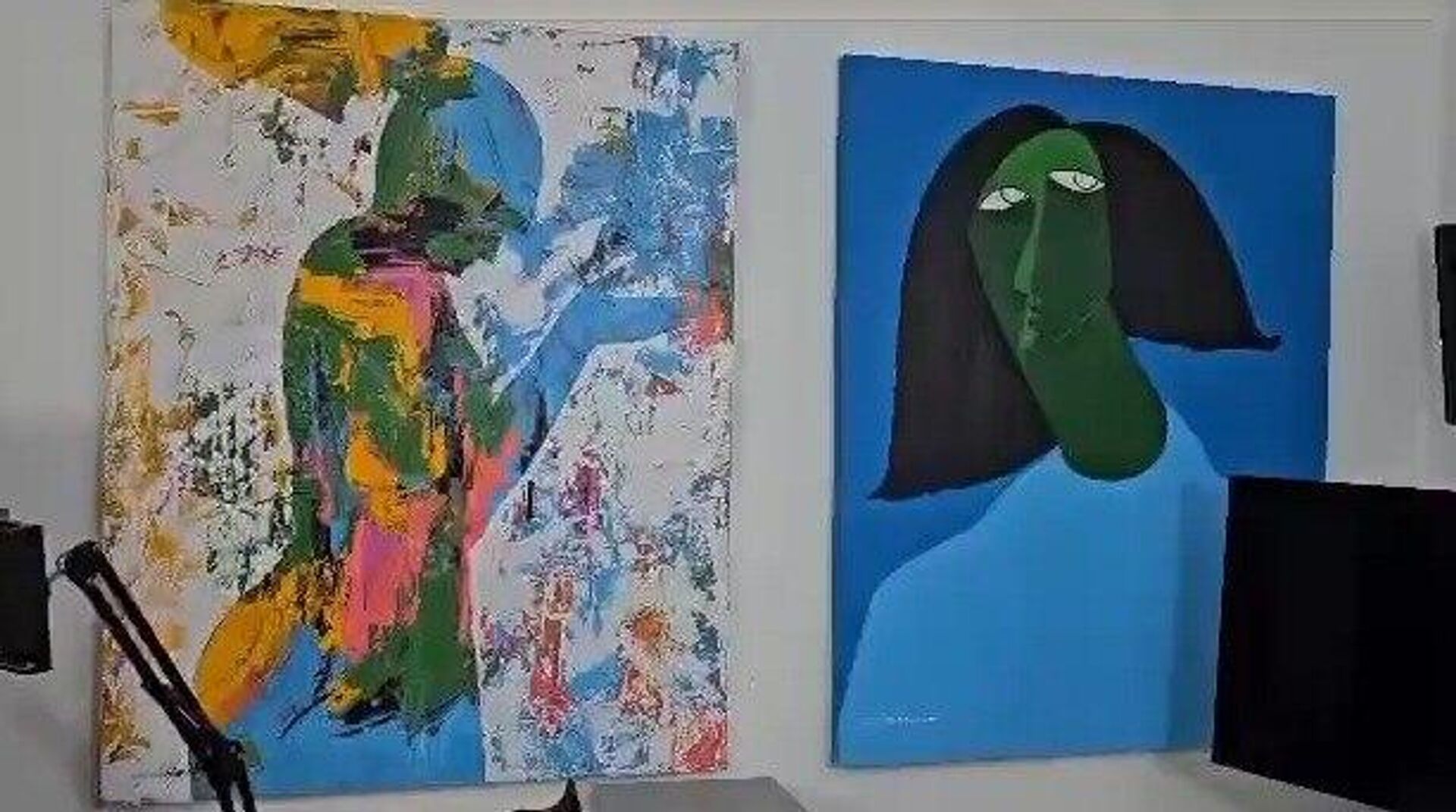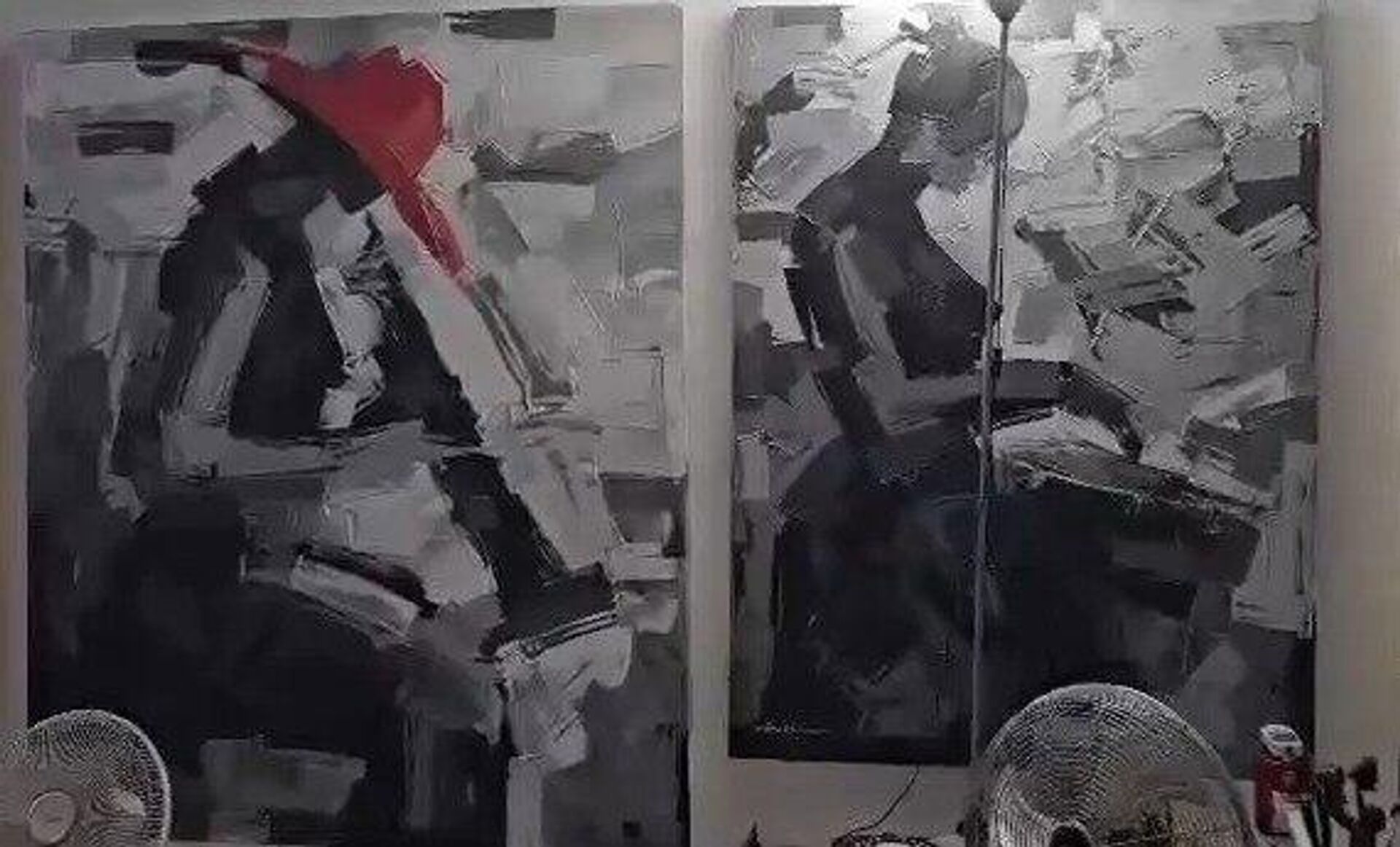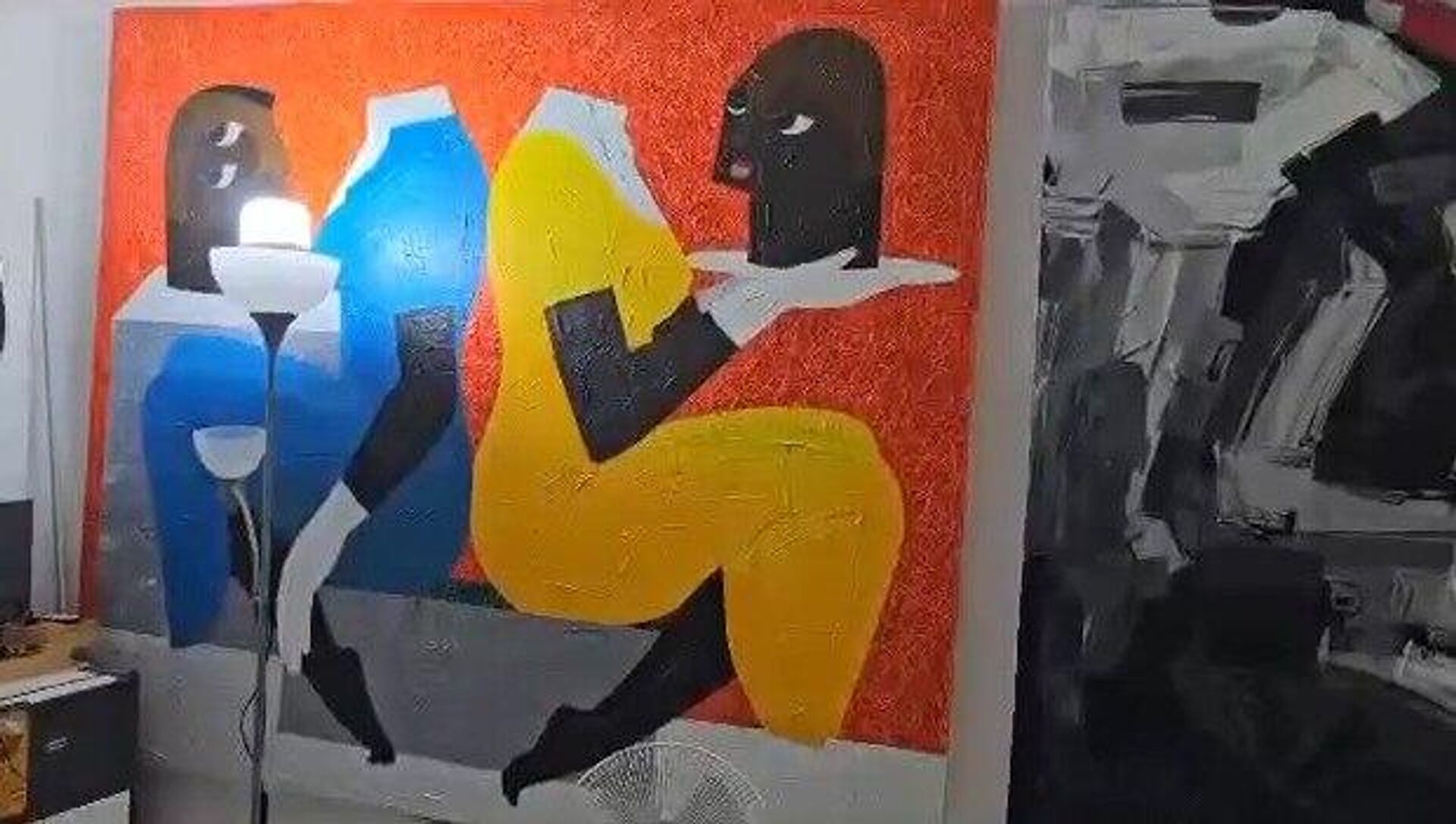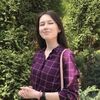Blending African & European Together in Paintings: Ghanian Artist Talks His Unique Art Experience

© Sputnik
Subscribe
On October 25, the world celebrated the International Artist Day. On this occasion Sputnik Africa spoke to a young painter from Ghana Maxwell Boadi, whose works were exhibited both locally and internationally, notably at the Ghana Museum in 2009, the Affordable Art Fair, Dubai in 2015 and the Sheremetyev Palace in Saint Petersburg, Russia in 2006.
Growing up in the Ga Mashi district of the Ghana's capital Accra, Maxwell Boudi started his journey in art at the age of four. As Boudi recalls, he first came into contact with art when he started making sketches in between helping his mother to cook the local dish known as the fufu. Boudi's love to art grew in primary school, where his teacher encouraged him to draw and helped to realize the aptitude for art.
"So from there, I also realized that when I was in primary four, because my primary four teacher has seen the talent that is in me, when it is time for drawing, she will call me to draw something on the board, whatever the subject that is. And so I realized that my primary four school teacher really fell in love with the gift that is in me. [...] So from there all my classmates realized the talent that is in me and I also realized the talent in me," the artist said.
Boudi emphasized one particular episode of his childhood that made him acknowledge that drawing "can give [him] something in the future." The artist said that when he was six years old and used to draw in an open gutter behind a nearby cinema along with some other people, a certain man distinguished Boudi's drawing and gave him some money so that Boudi continued to draw.

Paintings of the Ghanian artist Maxwell Boudi
© Sputnik
Speaking about the African heritage that influenced Boudi's artistic style and themes in the paintings, he mentioned the Ga Homowo Festival, annually held in Accra in late April – early May in the remembrance of famine that once happened in precolonial Ghana. The artist said that seeing numerous "people come around from alll over the world" for the festival had a great impact on his paintings.
"The heritage of these festivals really helped me because that is where I see people, I see the art, I see how people, when it comes to the festivals, when the Homowo is going on, how they carry the things on their head, and then they are moving with their clothes and you see people trying to take pictures and then people are talking and people are moving up and down trying to see what is going on and all this kind of thing. This particular heritage, I would say, really influenced my art work so that I will have much knowledge of art. Because all of these things that they were doing are in the form of art," he disclosed.

Paintings of the Ghanian artist Maxwell Boudi
Among the prominent African artists that affected his works, Boudi named Amon Kotei, the country's famous sculpturist, artist, musician and the creator of the Ghana's national emblem, and Ablade Glover, Ghanian artist and educator. Interestingly, Boudi said that he even saw them and their works in his dreams, noting some kind of "spiritual connection" with the artists.
"So when I look at their work, I just love it because I've been seeing people, I've been seeing the kind of thing that I want to do. Just the application of the colors I want to have on my canvas. They became a big influence in my life," Boudi highlighted.
As for the African cultural elements or symbolism incorporated into Boudi's paintings, the artist said that he "does not use much symbols," however, if he does "in every symbol there is life because every symbol has the story that it is [telling]." Nevertheless, Boudi underlined the importance of the ancient Ghanaian Gye Nyeme symbol, which expresses the omnipotence and supremacy of God in all affairs and means "Except God," noting that it is a "very rich one" as God "is the backbone of everything."

Paintings of the Ghanian artist Maxwell Boudi
© Sputnik
Apart from this, he stressed the significance of the Sankofa, another traditional symbol, which is represented either with a stylized heart shape or by a bird with its head turned backwards while its feet face forward carrying a precious egg in its mouth. Sankofa could be litteraly translate as "go back and get" and means the importance of studying the past.
Commenting on the particular messages and narratives that his paintings convey, Boudi explained that generally his works aim to highlight how essential it is to preserve nature, which he represents in the paintings using green colors.
"Most of the time when it comes to the messages, the work that I showed you about the greens. It is talking about nature. What we are lacking now. Life is within the greens. And if the greens are gone, the life is gone. So the works that I'm doing currently, I'm using instead of the browns, I'm using the greens, which I'm trying to portray or give a message that we should not forget that the life that we have, we should preserve the nature, we should preserve the trees, we should preserve what we have so that we can still have life, we can still continue," the artist elaborated.

Paintings of the Ghanian artist Maxwell Boudi
© Sputnik
Speaking about how his works represent African art, Boudi said that he "belnds both the African and the European together" in his paintings, trying to erase the stereotypes of how an African painting looks like.
"Yeah, because the way I see my work, I see my African lifestyle. You can see the people. You can see the movement. [...] But what I do is I blend both the African and the European together. I'm trying to build the whole work together because we are one," he explained.

